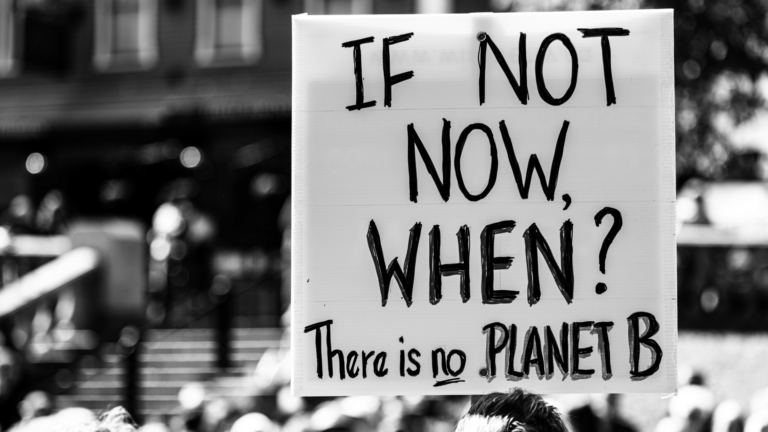The earth – our home, as we know so far is the only planet in the solar system containing life. As fascinating and wonderful it is, Earth is facing an accelerating detrimental effect of climate change also referred to as global warming.
Now we do hear this phrase regularly however we hardly have time to sit and think about it. But as an inhabitant of the planet, we must try and understand what it exactly is and how it is going to affect our future generations.
So let’s begin with understanding what is global warming?
Simply we can put it as – A long-term change in the Earth’s overall temperature with massive and permanent ramifications. Believed by scientists not to be a natural phenomenon rather an adverse effect of human activity.
Earth’s atmosphere consists of gases such as Oxygen and Nitrogen and other gases known as greenhouse gases like Carbon Dioxide, Nitrous Oxide, and Methane
When the sunlight hits the Earth’s surface the earth gets warmed up by absorbing some of that energy, the rest of the energy gets reflected, some of that energy goes back into space and some of it gets trapped by the greenhouse gases and sent back to Earth warming it up even more – this is called the greenhouse effect. The greenhouse effect occurs naturally and is necessary for life to sustain. Although an elevated greenhouse effect can be catastrophic for the planet by causing a lot of that energy to get trapped in the planet’s atmosphere and increase the temperature of the Earth at an accelerating rate.
Now, this can be further understood by trying to see the pattern:
For thousands of years the Earth’s average surface temperature has been mostly stable but the problem started a few decades ago when it shot up drastically. In the past 50 years, Carbon Dioxide emission has jumped 40%. On a geological timescale, the rate of increase is crazy fast. We have never been at this level in the history of mankind and it keeps climbing.
One might say that everything on earth is made of Carbon and it is neither created nor destroyed and just cycles around our biosphere, it is a natural process. So what’s with all the extra Carbon? Where is it coming from?
It all started around 150 years ago when mankind hit the jackpot – by digging up coal, oil, and gas in other words known as fossil fuel (buried carbons from organisms that died millions of years ago), from underneath the Earth and using it to fuel cars and produce electricity. The world went on a frenzy to create one thing after the other, and it has not stopped yet. This causes additional 50 Billion tons of greenhouse gases to our atmosphere.
Some of the main human activities that cause are massive emissions are –
Fossil fuel burning, Animals-Agriculture & Deforestation and Waste and Recycle pollution
Fossil fuel burning- Coal, Gasoline, Natural Gas, and Oil are some of the largest contributors to Carbon emission not only that when the emission reacts with heat it creates smog – a highly toxic thick air pollutant.
The massive amounts of excrement produced by the life stock farms emit toxic gases like Hydrogen Sulphide, Ammonia, and Methane into the air. Methane is 23 times more effective in trapping heat than Carbon Dioxide. Over 56 billion animals are raised globally every year for food purposes that are eight times more than the human population and eight times more waste adding these gases to the atmosphere.
Let’s understand that with some examples:
Land equivalent 7 football fields are bulldozed every minute to create more room for farmed animals and to harvest crops that feed them
Solid waste landfills are another massive cause of Methane emission – 11.6 trillion LBS. of solid waste is dumped on these landfills every year
Want some more?
Our civilization produced a devastating 43 billion Tons of Carbon Dioxide in 2019 – that’s 700 trillion Cubic Feet of Carbon Dioxide that’s a little more than 100 Mount Everests of Carbon Dioxide.
The Earth has not seen so much Carbon Dioxide in millions of years.
How does that affect our life you ask?
Well, here you go:
The Earth’s temperature has risen 1.5°F over the past century and with the current situation in mind, it’s projected to rise between 0.5°F to a staggering 8.6°F over the next 100 years. Many animal and plant lives are struggling to keep up with this temperature rise. Even if a single species go extinct that can cause a domino effect with the food chain – No living plants or animals means no living humans.
Rising temperature makes the oceans warmer that causes something known as Ocean Acidification (rising acid levels in the oceans from the Co2 reacting with the saltwater) – it harms the fauna of the oceans and is also causing the death of the Great Barrier Reef. This is a big problem cause about 1 billion people use oceans as their primary source of protein.
Since the oceans are getting warmer Polar Ice Caps are melting – 65% of polar Ice caps have melted away between 1976 and 2016, the planet losses on an average of 400 Billion tons of ice each year. To put it into retrospect if the Ice covering Greenland, and mountain glaciers around the globe were to melt the sea level will rise about 70 meters (230 ft).
Rising sea levels caused by Climate change also destabilize the climate – we get flooding, extreme rainfall, extreme storms a lot of destruction. Other places get drought causing starvation. We get heat waves, wildfires, water shortage a whole Pandora’s box (or Pandora’s Russian Doll).
This also has a chain reaction – Frequent natural calamities like these cause people to flee their homes, mostly permanently, and even the places where the situation isn’t that bad to have to deal with a growing stream of Climate Refugees.
More people to flee fewer places to go, now that’s a recipe for instability and war, that creates even more refugees compounding the problem even further.
There are also some less talked about effects of climate change:
Forest fires:
Scientists have correlated the rampant blazes with warmer temperatures and earlier snowmelt. When spring arrives early and triggers an earlier snowmelt, forest areas become drier and stay so for longer, increasing the chance that they might ignite.
Ruined ancient buildings:
These monuments of civilization, have so far been able to withstand the test of time but. Climate change might as well be another nail in the coffin. For example, the lengths that management at the Taj Mahal is going just to limit the erosion and damage to one of the wonders of the world, caused by pollution and heat, is unprecedented. Floods attributed to global warming have already damaged a 600-year-old site, Sukhothai, which was once the capital of a Thai kingdom.
Rising Mountains:
A gradual growth spur has been noticed in the Alps and other mountain ranges. The weight of the glaciers has kept the rate of growth of mountains in check for thousands of years. As the glaciers melt, this weight is lifting, and the surface slowly is springing back. Because global warming speeds up the melting of these glaciers, the mountains are rebounding faster. This can have long term adverse effects on the environment.
Fear of mass extinction of species:
Global warming is causing spring to arrive earlier that usual in the year. The early bird might not just get the worm. It might also get its genes passed on to the next generation. Because plants bloom earlier in the year, animals that wait until their usual time to migrate might miss out on all the food. Those who can reset their internal clocks and set out earlier stand a better chance at having offspring that survive and thus pass on their genetic information, thereby ultimately changing the genetic profile of their entire population.
The possibility having to deal with of an actual Pandora’s Box:
Not only is the planet’s rising temperature melting massive glaciers, but it also seems to be thawing out the layer of permanently frozen soil below the ground’s surface. Recent discoveries reveal the possibility of long-dormant diseases like smallpox could re-emerge as the ancient dead, their corpses thawing along with the tundra, get discovered by modern man. This can also increase the incidents of sinkhole appearance, landslides and rockslides.
Attack of the allergies:
Have you noticed? Besides COVID of course, the rise in cases of common cold and flu. The actual culprit is not always that cold drink that you had last night, climate change is playing its part there as well. Research has shown that the higher carbon dioxide levels and warmer temperatures associated with global warming are also playing a role by prodding plants to bloom earlier and produce more pollen. With more allergens produced earlier, allergy season can last longer. Get those tissues ready.
It’s like we are all in a sinking ship – no matter where the hole is. It is everyone’s problem.
So, what do we do?
We are aware of the situation and are thankfully a lot is being done by governments across the globe.
Instead of burning fossil fuels, we need to convert to renewable energy such as – solar and wind-powered which emit zero Carbon when operating. And these sources are limitless, more solar energy falls on Earth in one hour than all the energy our civilization uses in one year.
Most of the world can be powered by only renewable energy and we already possess that technology, we just need to decide it. Harvesting solar and wind energy is cheaper than it has been so far. Battery technology has also caught up enabling us to store energy more efficiently.
We need to work on more energy-efficient appliances and smart energy distribution systems. Certainly, regulations will have to catch up.
Despite all this, about 80% of the world’s energy needs are still met by burning fossil fuel so we as a race need to do something and every individual bears a responsibility, so let’s get our act together and act accordingly.












